Protect PDF with UPDF on Mac
Ensuring the privacy of your PDF files is crucial, and implementing encryption, password protection, or redaction is essential. Mac users can now enhance the security of their PDFs by utilizing password protection or redaction features within the UPDF program.
Windows • macOS • iOS • Android 100% secure
1. Add an Open and Permission Password
UPDF provides extra security to your PDF documents by applying an Open and a Permission password. The purpose of this password is to restrict your document from unauthorized persons to open and view it.
- To add an open and permission password, first open your PDF in UPDF.
- After this, proceed to the Save icon at top left and extend its menu to choose the Protect Using Password option.
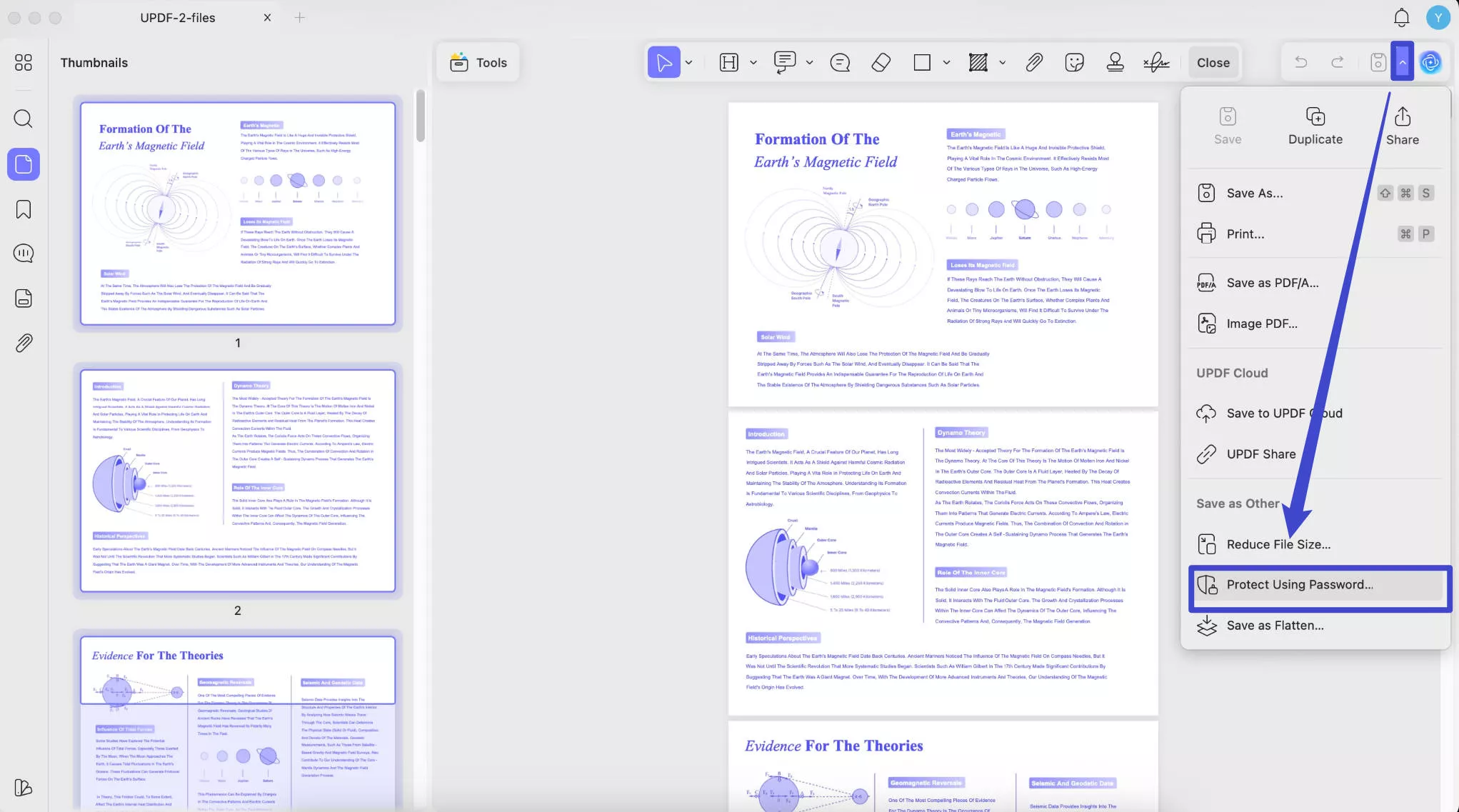
- Following this, a new window will appear on your screen, enabling you to set passwords respectively.
- Open Password:
From the current window, press the + Add button to reveal another window.
Now, set your Open Password and then confirm it by rewriting it. Once done, click on the Save button to set your open password.
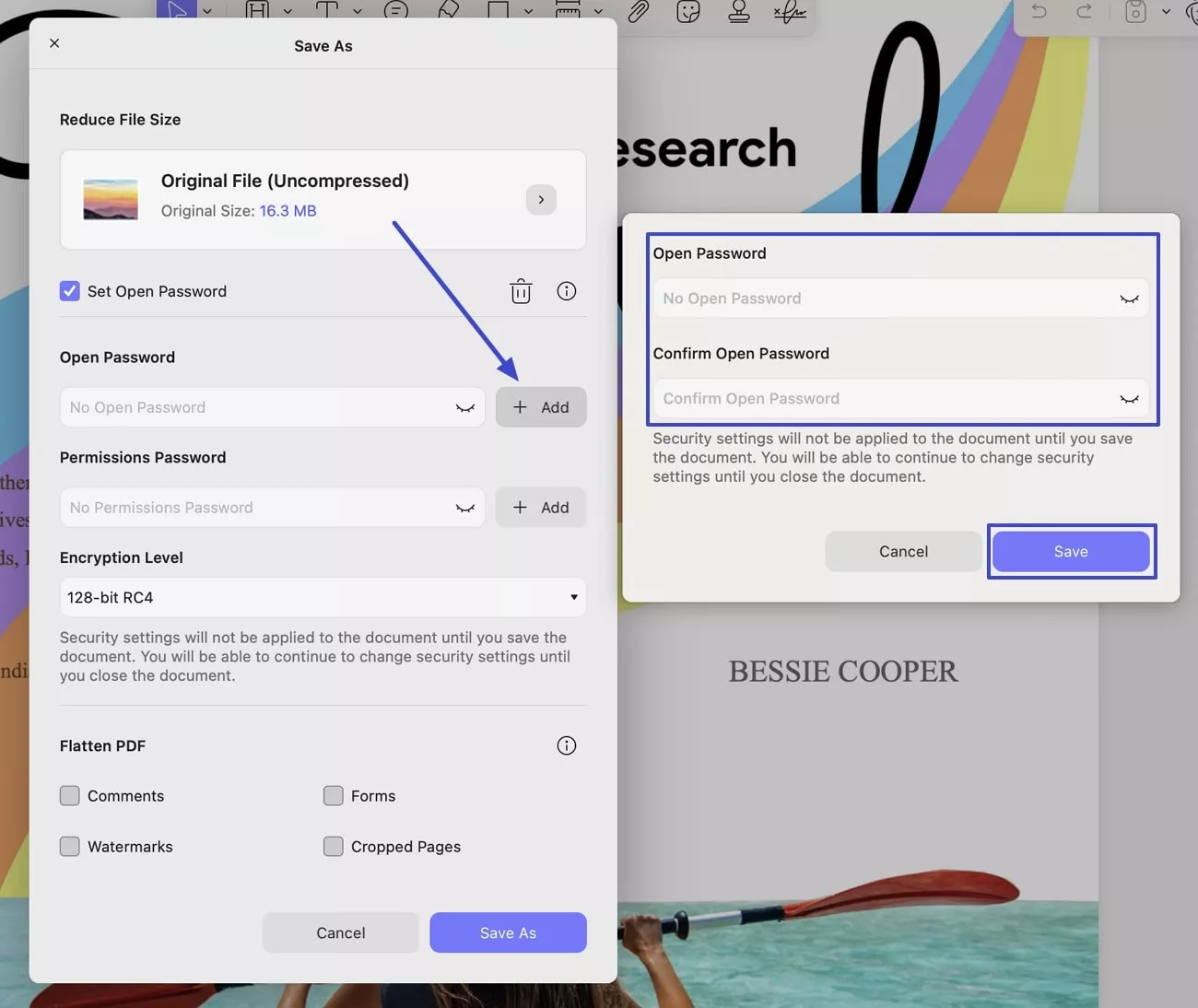
- Permission Password: To put your permission password, follow the stepwise guide.
In the same window, click the + Add button to place a permission password and confirm it. Once all is set, press the Save button to save it for security reasons.
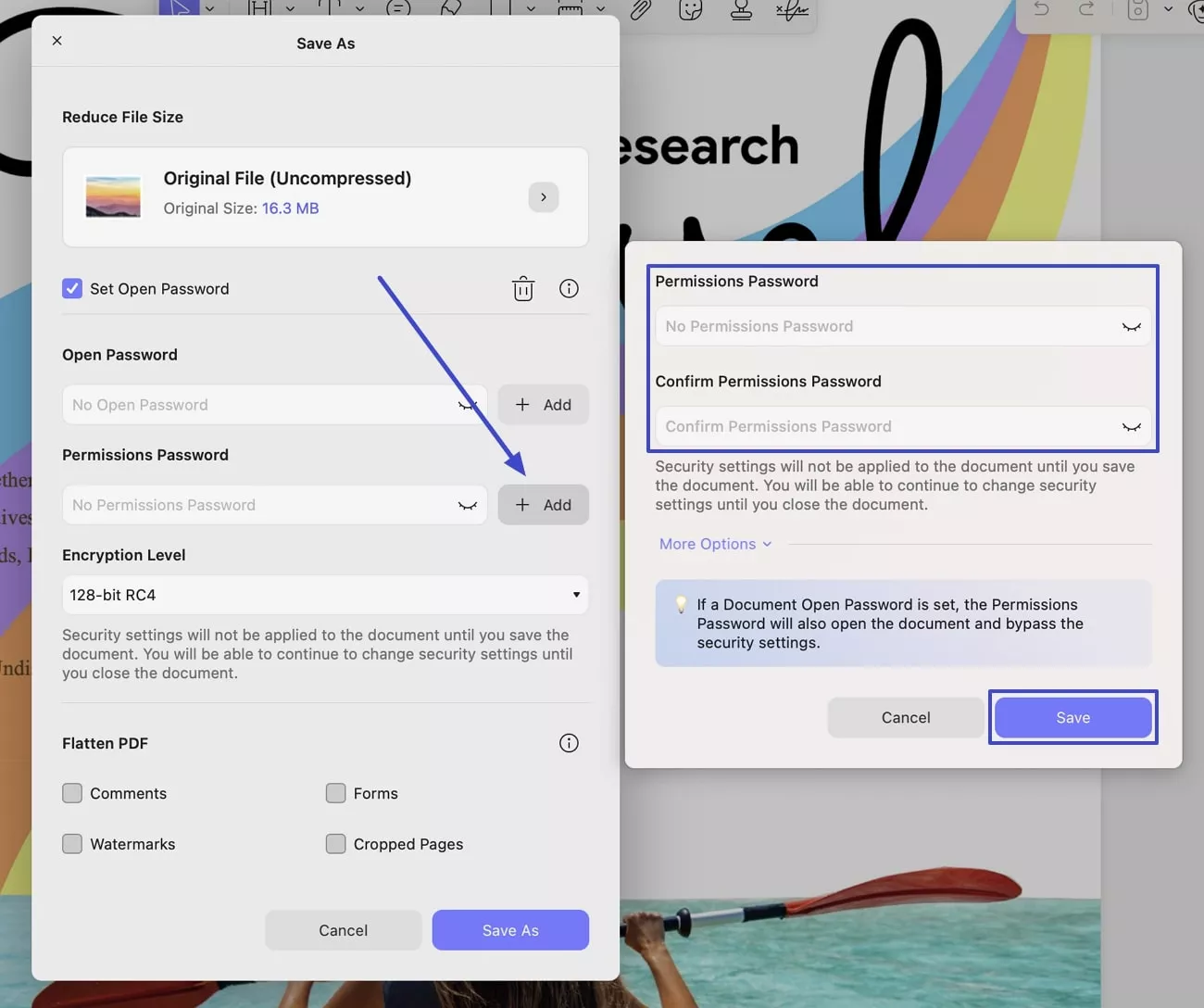
- Besides this, you can also specify your Encryption Level by extending the menu and choosing between 128-bit RC4, 128-bit AES, and 256-bit AES.
Once all the settings are applied, press the Save As button to secure your PDF with new passwords. Next, click Save to save the file in the new pop-up window. Please note, security settings will not be applied to the document until you save the document.
2. Remove Security
UPDF also gives you the feature to remove security from your existing document.
- To remove security from your document, click the Remove Password option from the Save menu.
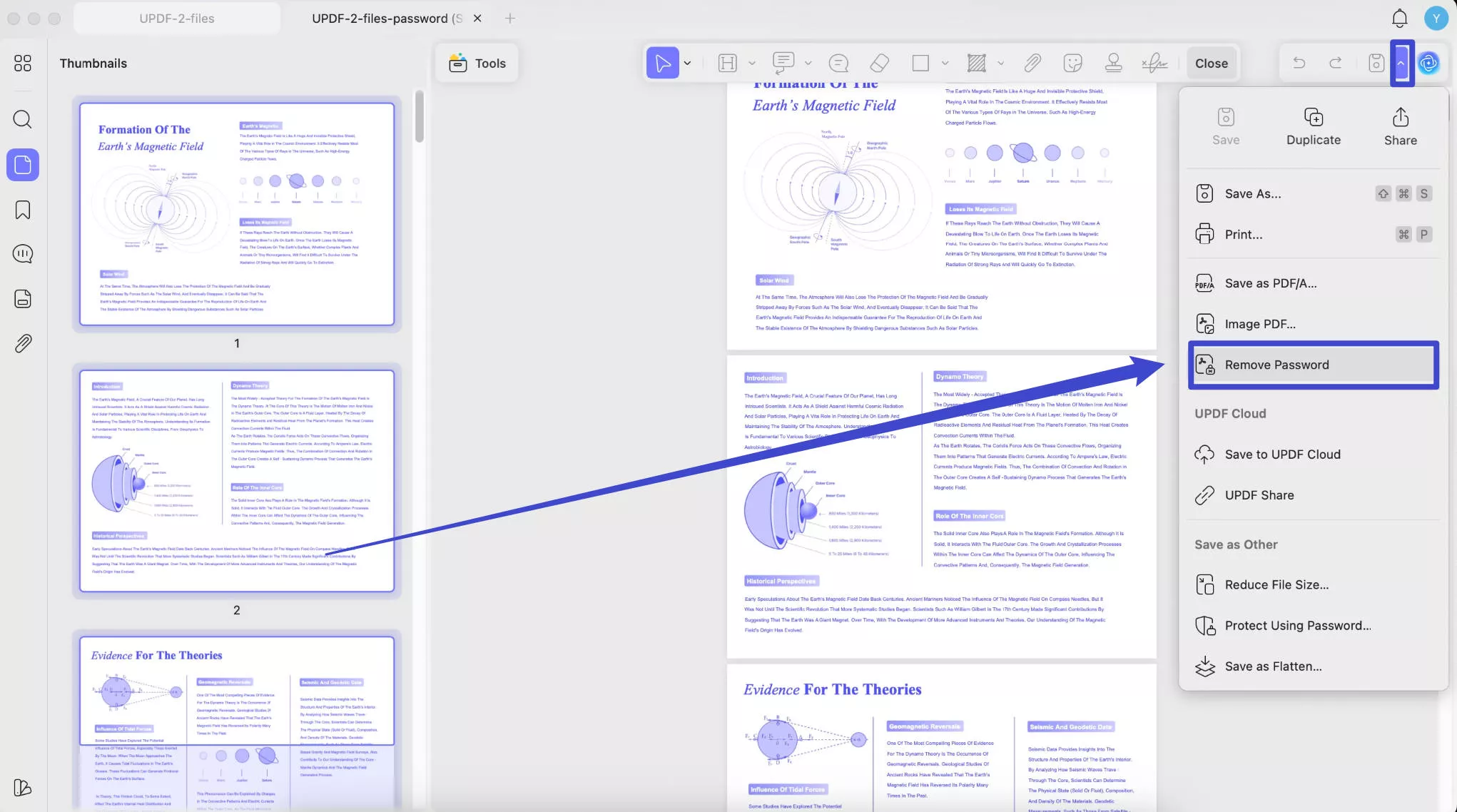
- Now, press the Remove button in the newly appearing window, enter the password, and click on the “Unlock” to remove security from your document.
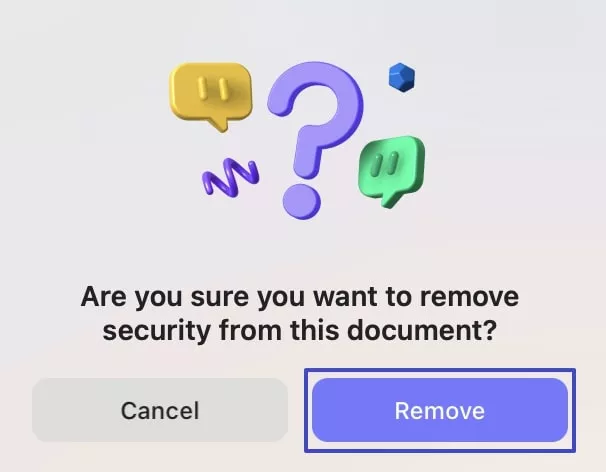
- Finally, click the Save button, as the security settings will not be applied until you save the document.
3. Redact PDF
Besides restricting access by the implication of the passwords, you can also limit text revelation via the PDF text redaction feature. It lets you black out the selected portion of the PDF content. Once redacted, no one can view the content; thus, your data privacy will remain intact.
Hop on below to learn how you can redact PDFs with UPDF!
- Open the desired PDF in UPDF.
- Now, go to the Tools option from the top left side and choose the Redact option from the drop-down menu.
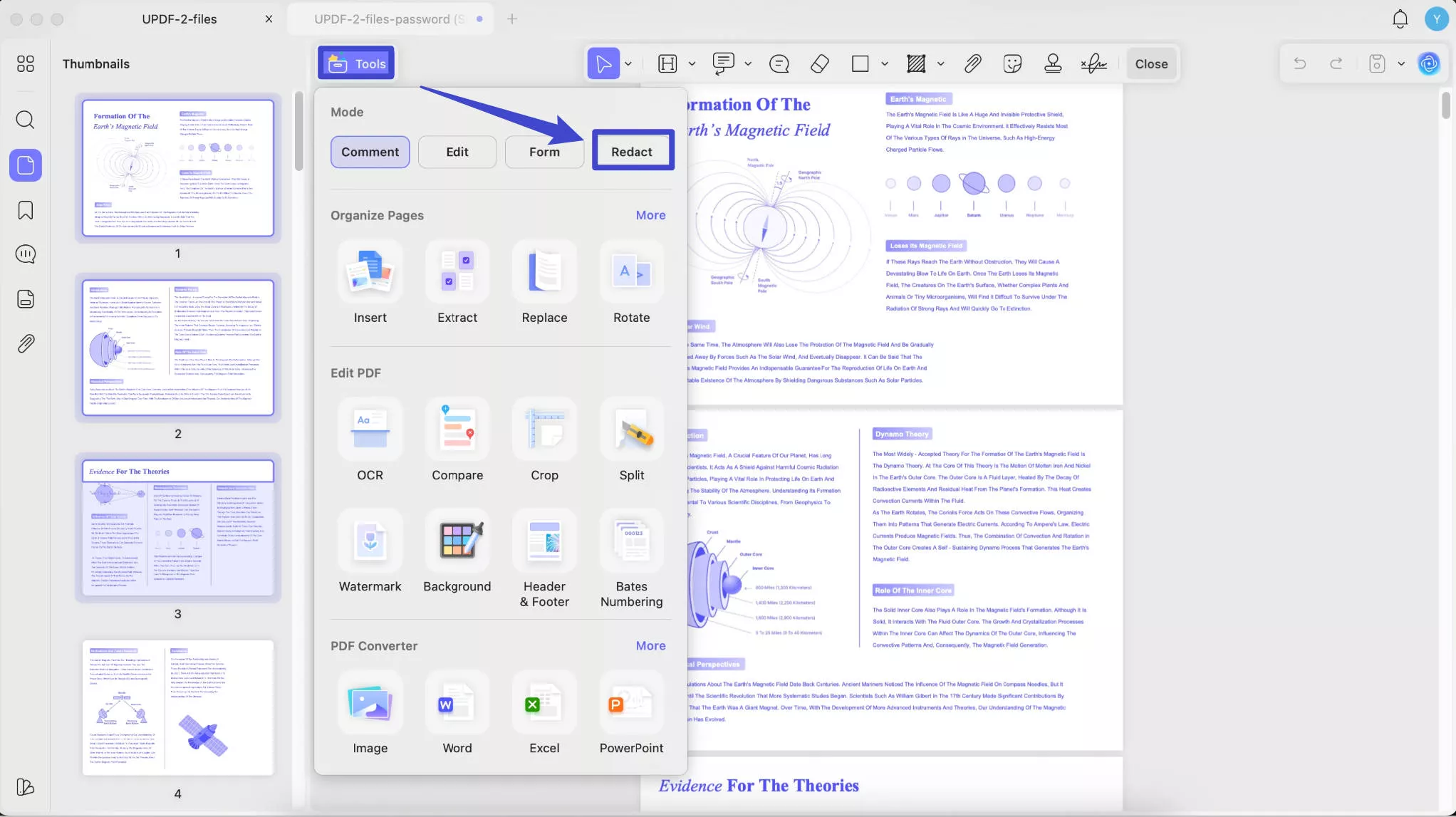
- Following this, a toolbar will appear at the top with 4 redaction options to choose from.
Redact Text & Images
- To redact any text from your document, press the Redact Text & Images option from the top toolbar. After this, highlight any text with the help of the cursor.
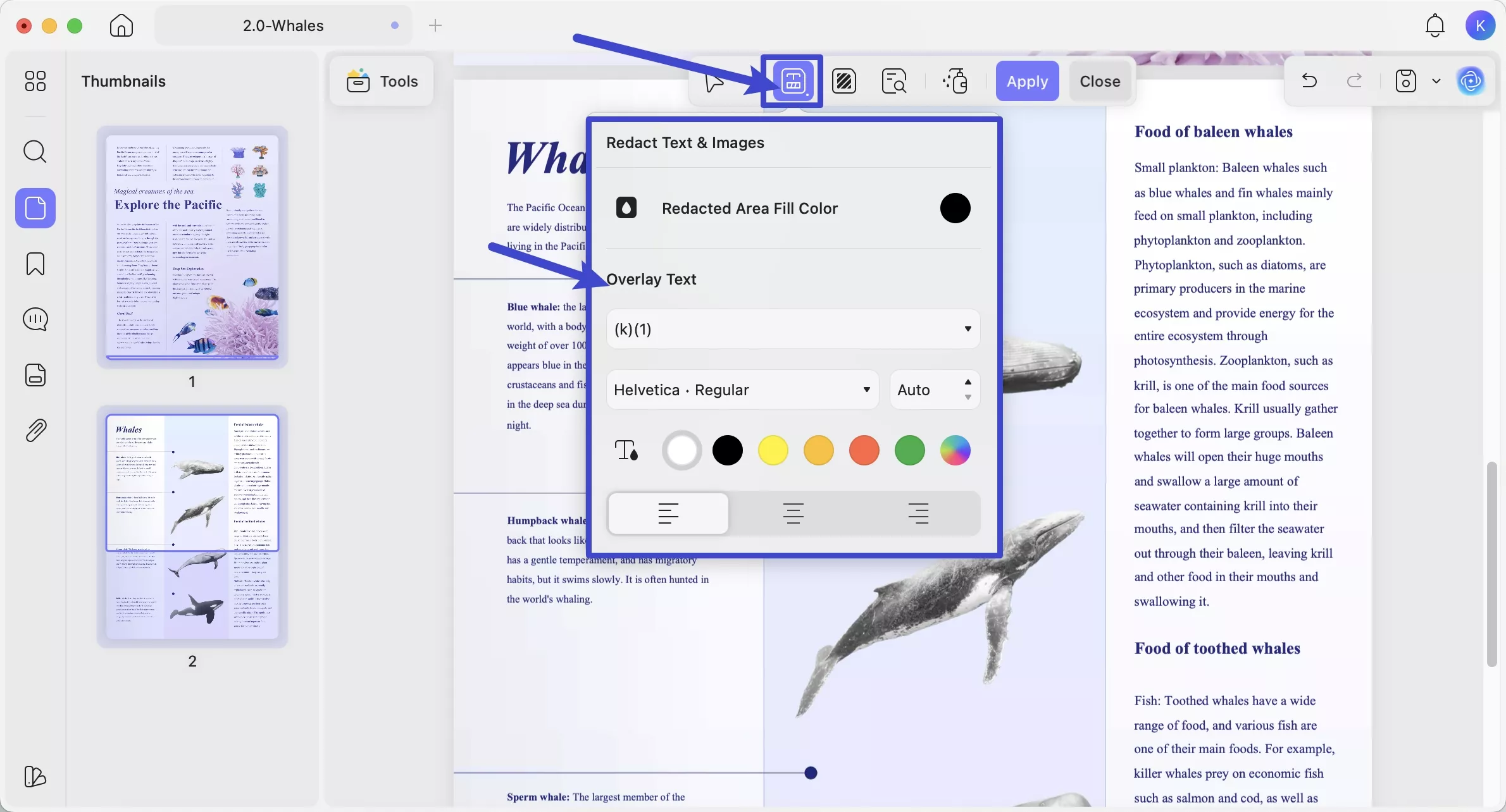
- Once done, you can change the redaction color, add a note, or delete the redaction from the floating toolbar.
- The revealing toolbar also provides an Overlay Text icon, revealing a window to input the overlay text, change text alignment, color, and font.
- Finally, press the Apply button to redact the selected text from your document.

Redact Pages
- Owing to this option, you can select whether you want to redact all of the PDF pages at once, or a custom range of pages. You can also choose to redact odd, even, landscape, or, portrait pages.
- Besides this, you can choose the redacted area fill color from the options provided.
- Once all properties are selected, press the Redact button to perform redaction on the selected pages.
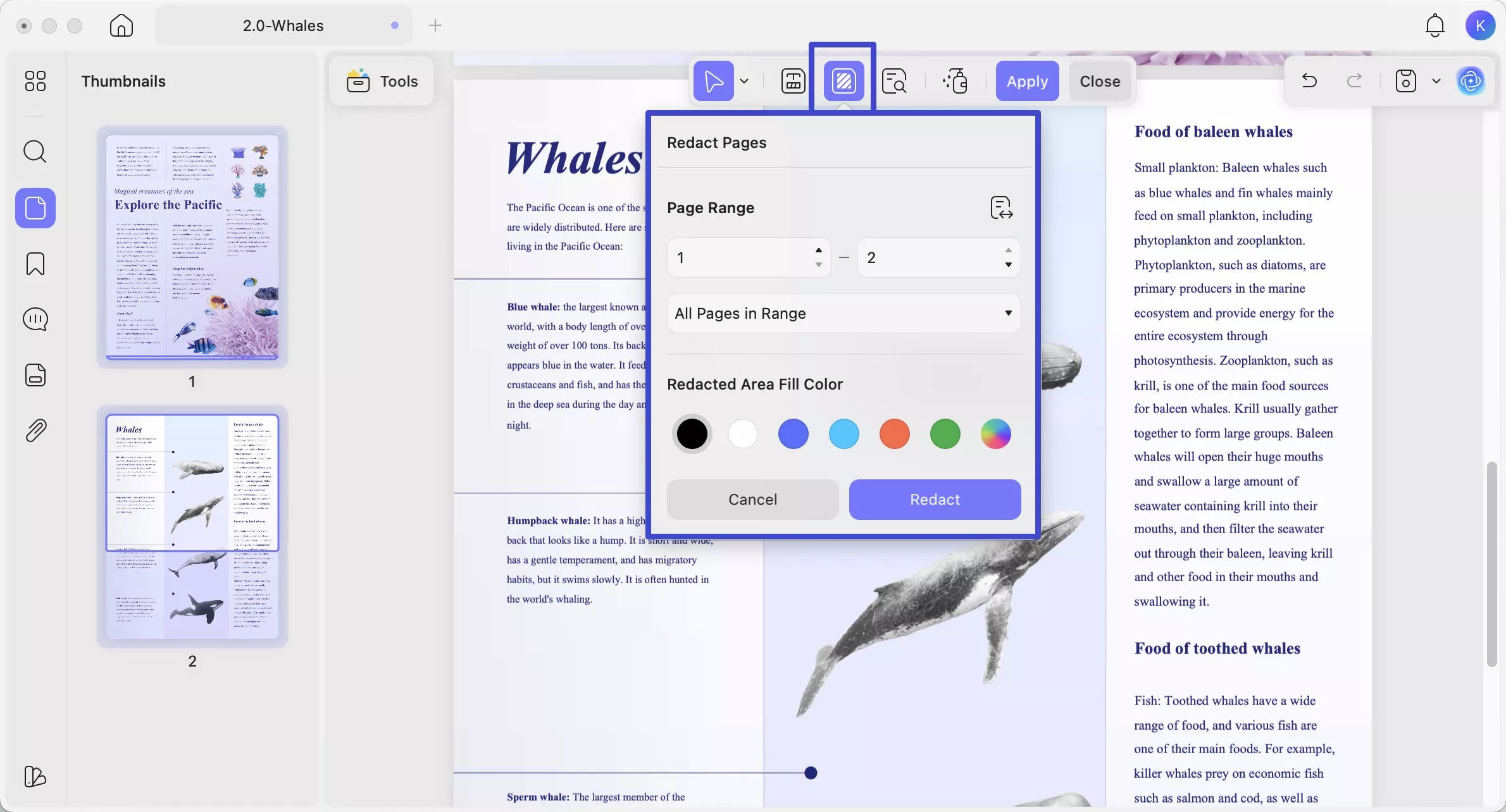
Find Text & Redact
- Go to Find icon from the left panel and select Find Text & Redact. When you select this option, you can type a keyword or text in the given text box in the left panel to find the available matches.

- From the results, choose between Select All or a specific item to press the Redact button at the bottom of the panel later.
Sanitize Document
The new UPDF provides a Sanitize Document option, which removes hidden data and metadata from your document. It helps to keep your sensitive information intact, so that it's not passed along in the PDF when published.
- For this, press the Sanitize Document option from the top toolbar and then press OK button after reading the list of removed items.
- Now, click the Apply button in the top right corner to apply all the redaction changes throughout the PDF.
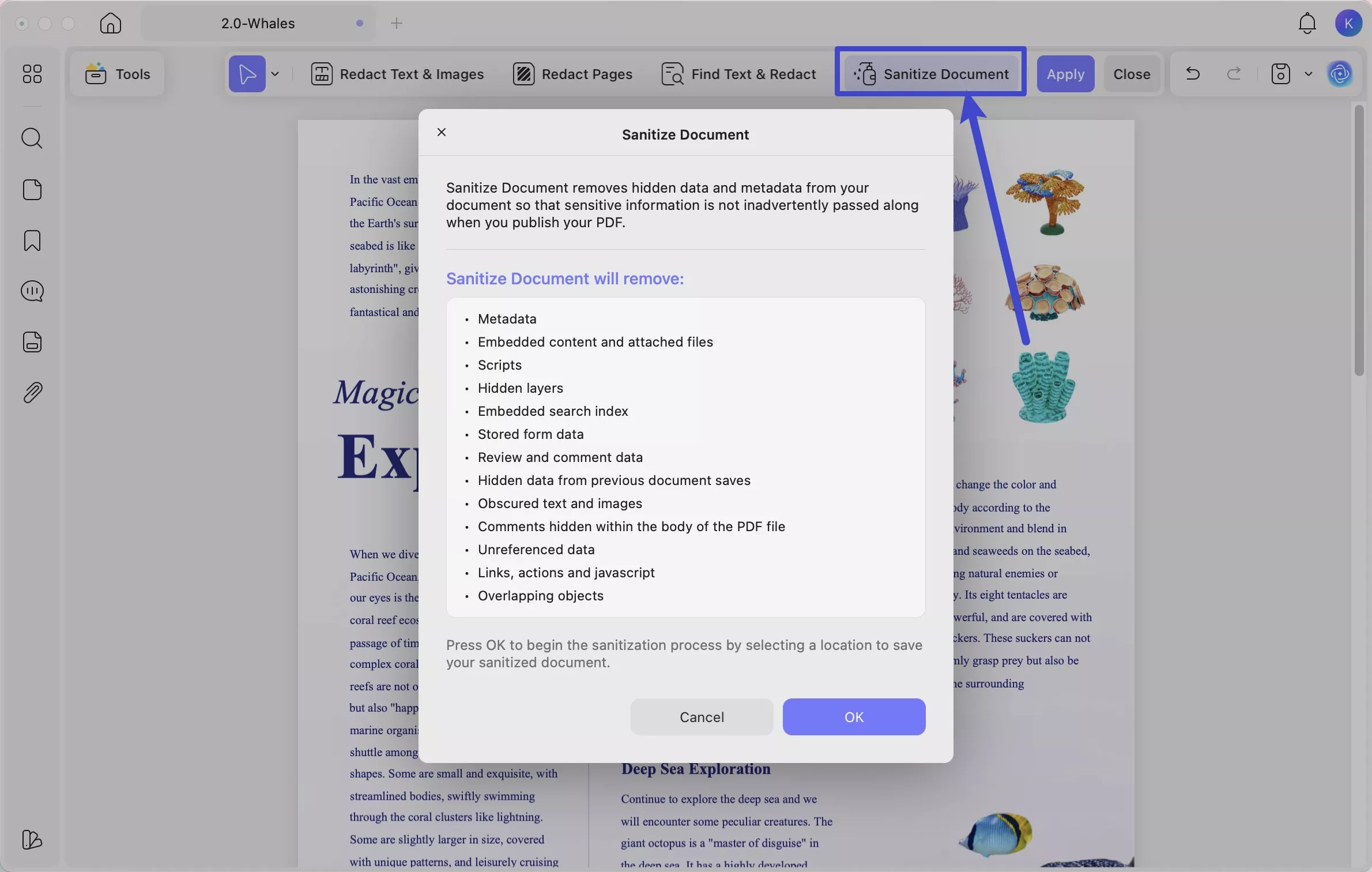
Once you are done with all these steps, don't forget to save your file.
 UPDF
UPDF
 UPDF for Windows
UPDF for Windows UPDF for Mac
UPDF for Mac UPDF for iPhone/iPad
UPDF for iPhone/iPad UPDF for Android
UPDF for Android UPDF AI Online
UPDF AI Online UPDF Sign
UPDF Sign Edit PDF
Edit PDF Annotate PDF
Annotate PDF Create PDF
Create PDF PDF Form
PDF Form Edit links
Edit links Convert PDF
Convert PDF OCR
OCR PDF to Word
PDF to Word PDF to Image
PDF to Image PDF to Excel
PDF to Excel Organize PDF
Organize PDF Merge PDF
Merge PDF Split PDF
Split PDF Crop PDF
Crop PDF Rotate PDF
Rotate PDF Protect PDF
Protect PDF Sign PDF
Sign PDF Redact PDF
Redact PDF Sanitize PDF
Sanitize PDF Remove Security
Remove Security Read PDF
Read PDF UPDF Cloud
UPDF Cloud Compress PDF
Compress PDF Print PDF
Print PDF Batch Process
Batch Process About UPDF AI
About UPDF AI UPDF AI Solutions
UPDF AI Solutions AI User Guide
AI User Guide FAQ about UPDF AI
FAQ about UPDF AI Summarize PDF
Summarize PDF Translate PDF
Translate PDF Chat with PDF
Chat with PDF Chat with AI
Chat with AI Chat with image
Chat with image PDF to Mind Map
PDF to Mind Map Explain PDF
Explain PDF Scholar Research
Scholar Research Paper Search
Paper Search AI Proofreader
AI Proofreader AI Writer
AI Writer AI Homework Helper
AI Homework Helper AI Quiz Generator
AI Quiz Generator AI Math Solver
AI Math Solver PDF to Word
PDF to Word PDF to Excel
PDF to Excel PDF to PowerPoint
PDF to PowerPoint User Guide
User Guide UPDF Tricks
UPDF Tricks FAQs
FAQs UPDF Reviews
UPDF Reviews Download Center
Download Center Blog
Blog Newsroom
Newsroom Tech Spec
Tech Spec Updates
Updates UPDF vs. Adobe Acrobat
UPDF vs. Adobe Acrobat UPDF vs. Foxit
UPDF vs. Foxit UPDF vs. PDF Expert
UPDF vs. PDF Expert